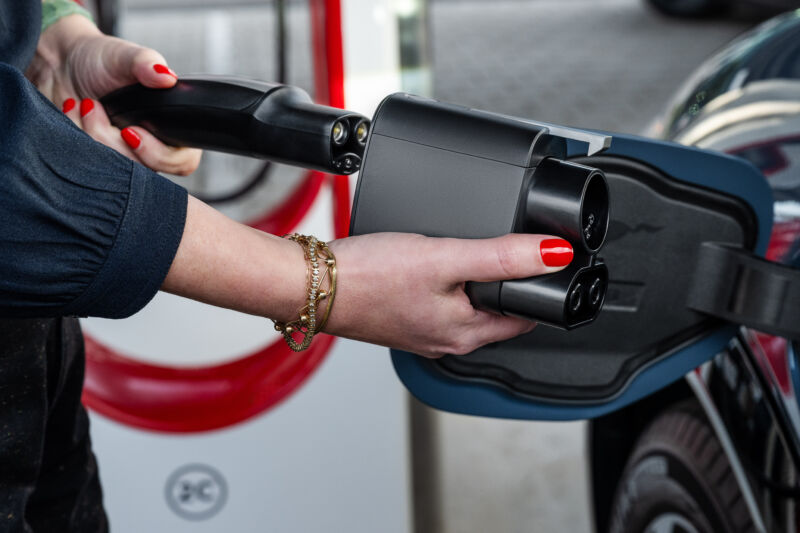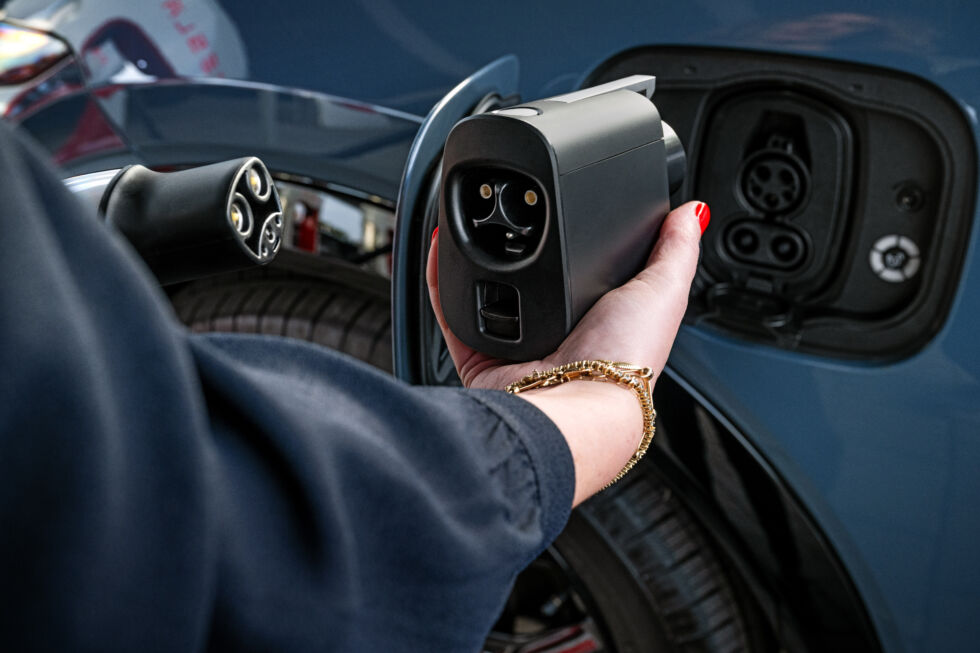
Ford
Today, Ford electric vehicles gained access to the Tesla Supercharger network. Last May, the Blue Oval was the first automaker to throw its lot in with what was then called the North American Charging Standard and is now known as J3400. Ford proved to be the first domino falling, and with Stellantis’ announcement earlier this month that it too would move to J3400, the more compact DC fast-charging plug will be the de facto standard in the next couple of years.
Until Ford made the switch, every non-Tesla EV in North America had settled on the Combined Charging Standard 1 plug (with the exception of the Nissan Leaf, which still uses CHAdeMO). CCS1 and J3400 use the same electronic communication protocols—only the actual plug and socket are different.
But it will take some time for car makers to start building J3400 ports into their EVs. That should begin next year, probably with the introduction of model year 2026. This means that EVs older than MY26 will need to use a passive adapter to mate a J3400 charger cable with a CCS1-equipped EV.
Ford is making the adapter available for free for Mustang Mach-E and F-150 Lightning owners as long as they order one by June 30 of this year. After that date, the adapter will cost $230. Ford says that Ford Pro fleet customers can also order a complimentary adapter for their EV (which includes the E-Transit as well as the Mach-E and Lightning) by contacting their Ford Pro account manager. (Ford Pro will also contact fleet owners by mail in the coming weeks.)

Ford
Ford EVs already use the ISO 15118 “plug and charge” protocol, which means they give the charger their billing details as part of the electronic handshake, obviating the need to use an app or credit card to start a charging session. And more than 15,000 Tesla chargers will now show up in the BlueOval charge network, which customers can navigate to via the FordPass smartphone app or the Charge Assist app on their infotainment systems.
Ford EVs aren’t compatible with every Tesla Supercharger, however. They must be the more recent units, which are able to charge at up to 250 kW, identified by a black collar at the base of the charging plug. Older chargers, which can only charge at up to 150 kW, have a silver collar instead. Since these older chargers won’t appear in the FordPass or ChargeAssist apps, it seems prudent for Ford EV drivers to use either of those to find a suitable charger location.
And the adapter is only for DC fast charging, not for Tesla’s AC destination chargers. (Ford’s plug-in hybrids are only capable of AC charging, and there is no need for them to have access to an adapter, so they will never be able to use a Supercharger.)
I don’t imagine an Ars Technica reader having much trouble with fitting the J3400 adapter, but for people with less dongle experience, Ford has produced a short tutorial film. Perhaps the only potential pain point will be unplugging one’s EV and driving off without the adapter—a $230 lesson to learn—but since the Tesla cable needs to be put back in its holster, even that seems pretty unlikely.
“This move will improve the public charging experience by giving our customers even more choice and is a vital part of our growth as an EV brand,” said Ford President and CEO Jim Farley.

